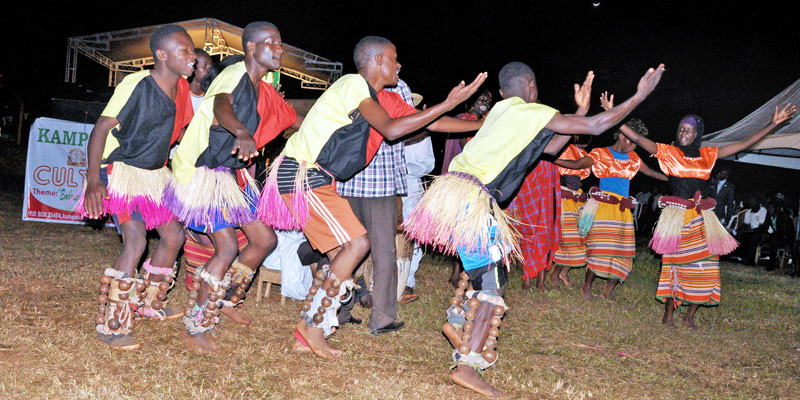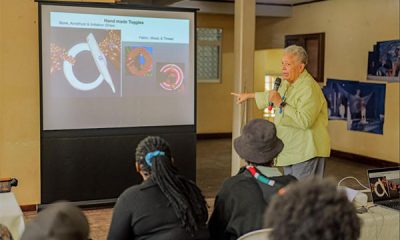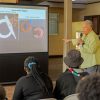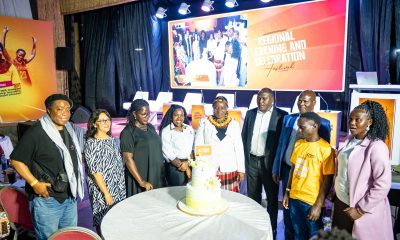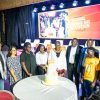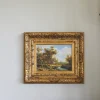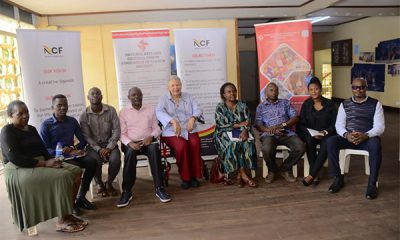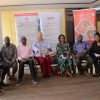Arts
Understanding Traditional Ugandan Music Part II
Eastern Uganda
Bigwala is the traditional music of the Basoga of Eastern Uganda. It is mainly performed during royal celebrations such as coronations and funerals and more recently on social occasions like weddings. Bigwala is performed by a set of five or more single-tone gourd trumpets, accompanied by a particular dancing style. Singers and dancers move in a circular formation around the five trumpeters, gently swinging their waists and raising their hands with excitement in time with the music and rhythm. Song lyrics tell the history of the Basoga, focusing in particular on their king, thus consolidating their identity and links with their past. Bigwala music also addresses issues such as leadership, marital problems and common socio-economic norms and practices
Northern Uganda
Originally a courtship dance of the Acholi people, Larakaraka is a specific song that gives solace to people from Northern Uganda who have been abducted by rebels of the Lord’s Resistance Army. It has a vigorous rhythm and is accompanied by drumming pounded out on gourds struck with bicycle spokes to attract attention. Gourds or calabashes are multi-purpose vessels – also used to fetch water and sometimes as stools. Some people in the Northern part of Uganda use them as umbrellas to limit the effects of the hot sun; and when babies cry, mothers lightly tap out rhythms on gourds to lull them to sleep.
Anjolinaye is a specific praise song that explores the features of a beautiful African girl. It describes the beauty of this African girl, detailing her rounded, well-shaped neck, and sparkling white eyes and teeth. This song was specifically composed by the Alur people of Northern Uganda to uphold the status of women in their society, which had previously been characterized by civil strife.
Ding Ding music comes from the Acholi people in the northern part of Uganda, who are highly regarded for their dark complexion and tallness. Girls developing into young women perform this high-energy dance with its sweet, engaging melodies and intense, syncopated rhythms. Ding Ding is played on drums, angwara (flute), addungu (bow harp), xylophone, ukelele and whistle.
Traditional music in modern Uganda
As much as traditional music forms part of Uganda’s history, it also has a strong connection to the contemporary world. For instance, it continues to make a remarkable contribution to the education sector. This explains why much of Uganda’s modern music has deep roots in traditional genres. A considerable number of the musicians in Uganda today developed their musical skills playing traditional music. There have often been disputes over the ownership of particular copyrights, since the same keys and chords are employed.
The spirit of traditional music in Uganda has been evident in the now common traditional cultural galas held at institutions of higher learning, where contestants put up a stiff fight to ultimately emerge victorious. During modern marriage ceremonies like weddings and introductions, traditional music and dance groups have emerged to be so important they have to be catered for in the proposed budget. Ugandans, now more than ever, enjoy wedding parties that feature particular traditional performers. This clearly shows that traditional music is still very relevant and alive in modern Uganda.
It could be argued that in the end, what matters most is the effect that music has on a listener, not the manner in which it is produced. On that note, the sounds of enanga, addungu, angwara and other traditional forms of Ugandan music excite more intense feelings in most listeners than contemporary, electronic music. In fact, the music made using traditional instruments is regarded by many to be of far superior quality than music made using computers and electronic instruments.
Comments



